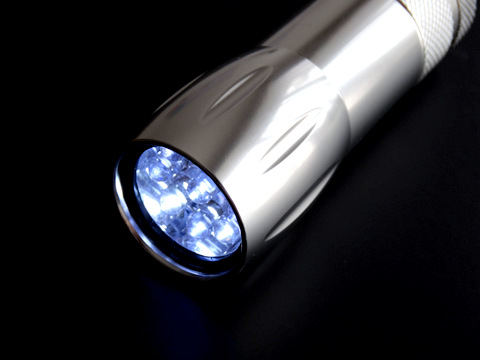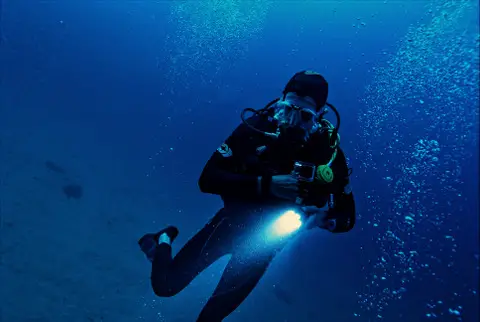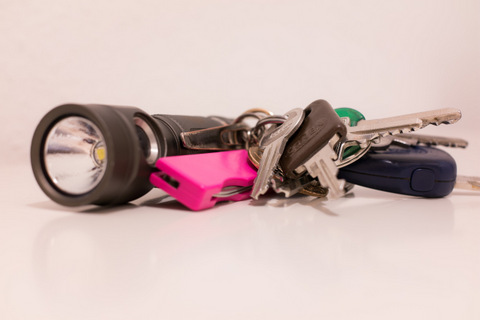Types of Flashlights for Late Night Hiking and Camping Adventures
Ever since the flashlight was invented back in 1899, we have been using these devices to defy nature and light up the darkness. No longer are we forced to retreat to our tents or shelters come nightfall when sleeping in the great outdoors.
While the original flashlight was a basic device powered by “D” batteries, today’s flashlights come in all shapes and sizes and are powered in a variety of different ways. Having a portable hand-held electric light source makes night-time hikes possible and allows us to do a number of tasks while camping after the sun has set for the day.


Often called torches by most of the world outside the US, today’s flashlights are often designed for specific purposes. Some are used for hunting, some for underwater diving, and some for simply reading a good campfire book. There are also a number of things to consider when purchasing a flashlight including its light output (lumens), power source, runtime, size, cost, and efficiency.
Many flashlights still run on batteries just like the original did, but others now run by turning a crank, through solar power, or via a USB. Some are cheap and disposable while others are heavy-duty and meant to last nearly a lifetime.
Take a look at some of the different types of flashlights out there today and decide for yourself which one is right for you.


Incandescent Flashlight
This type of flashlight is the most commonly seen flashlight. You most likely have one sitting a drawer somewhere at home and they are readily available at all kind of stores including grocery stores and gas stations. Like the original flashlight, many incandescent flashlights still run on bulky “D” batteries and their popularity stems from the fact they are usually very inexpensive.
This type of flashlight commonly uses an incandescent light bulb which contains a tungsten filament, however, some models may feature a halogen lamp. The bulb-life in incandescent flashlight is usually quite limited, sometimes lasting only a few hours. However, all but the cheap disposable flashlights should allow you to replace the bulbs.
While incandescent flashlights may have a reputation for breaking easily, they are great for giving to kids and you can affordably bring quite a few along for everyone in your family to use on a camping adventure.
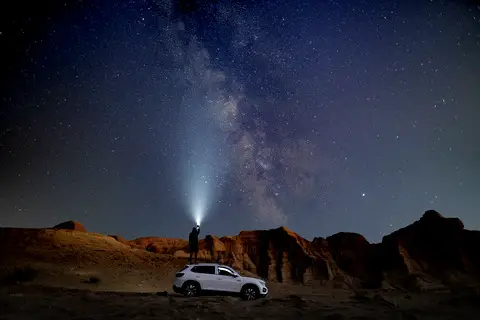
LED Flashlight
A big step up from the incandescent flashlight is an LED flashlight. These are much more durable than an incandescent and produce a stronger beam of light. Other benefits of an LED flashlight are that they don’t generate heat and have a much longer battery life.
LEDs produce roughly ten times the lumens per watt that an incandescent does and produces a more crisp white light with a slight bluish tint. While an LED flashlight will cost you a bit more than an incandescent one, its longer life will prove more cost-effective in the long run.
HID Flashlight
A lesser known flashlight is the HID or high-intensity discharge flashlight. These flashlights work by way of an electrical current passing through ionized gas and produce a very bright light. Consider this flashlight to be like the high-beams found on your vehicle. This type of flashlight is very useful for backcountry adventures where no city lights are present and during new moons where the night is almost pitch black.
Be ready to pay a hefty price for an HID flashlight, but if you really want to spot nocturnal animals or objects in high detail on a dark night then you may want to consider this type.
Tactical Flashlight
Just like a pair of Altama tactical boots, a tactical flashlight is specially designed to withstand rugged environments and harsh circumstances. These serious flashlights can sport some powerful lumens, some models producing thousands of lumens. A tactical flashlight is often used with a handgun or rifle to aid low-light target identification. While it is usually illegal to hunt certian animals like deer at night, tactical flashlights are sometimes allowed to be used with rifles at night to cull invasive species or pests.
These flashlights are small and can be mounted directly to a gun, allowing the user to have immediate momentary illumination of a target. Their ruggedness easily stands up to the impact of recoil.
Solar Powered Flashlight
Heading into the wilderness for an extended period of time, then you may want to think about getting a solar powered flashlight. When recharging your flashlight won’t be an option and you don’t wish to spend a lot on or carry spare batteries, simply use the power of the sun to run your flashlight. While this type of flashlight may not be as powerful as those running on batteries, they are a great environmentally-friendly option to consider and are usually rather inexpensive.
Mechanically Powered / Shake Flashlight
Want an environmentally-friendly option but worried you may not get a lot of sun? Mechanically powered and shake flashlights are other types of flashlights that don’t require the use of traditional batteries.
One style uses a winding crank which is connected to an enclosed electrical generator while others generate electricity by way of electromagnetic induction. There’s no need to purchase and pack a bunch of spare batteries, simply crank the lever or in other models shake the flashlight to produce light on-demand. These flashlights are extremely useful in emergency situations as you don’t have to worry about the flashlight not being charged or the batteries being old and dead. The one drawback you will find is that they generally don’t produce a very bright light and require a bit of manual labor on your part. However, they are fairly inexpensive.

Headlamp
Too lazy to carry a flashlight or faced with a situation where you have no free hands? Let a headlamp come to your rescue. Campers have long used headlamps as flashlights since they free up your hands to do any task you need to get done. Some models simply strap on to your head while others can be clipped to the brim of a cap or mounted to a hard hat.
Cave divers, miners, and mountain bikers often make use of headlamps since they don’t have the ability to easily or safely handle a traditional flashlight. Wearing a headlamp allows you to easily build that campfire, make repairs on your 4WD vehicle, or take great night photography. Many models allow you to adjust the angle of the head so you can focus the light where it’s needed and most feature strong and long lasting LED bulbs.
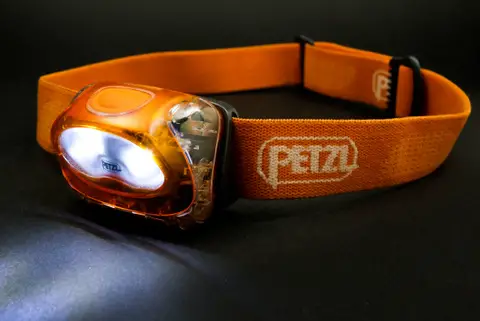
Lantern
Another great light source to take camping is a lantern. While old-style lanterns used a fuel source such as kerosene, today’s lanterns simply use LED bulbs which make them much safer. While an LED lantern won’t offer more light than an LED flashlight, it is designed to be easily set down so you don’t have to fuss around with arranging a flashlight where you want it. A lantern will still come with a handle so it can be carried around like a flashlight, but is meant to light up an area rather than spotlight an object.
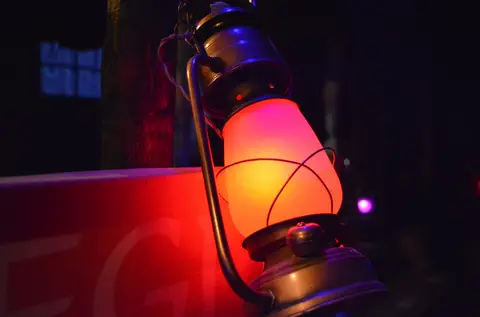
Diving Lamp
Planning a seaside camping adventure and thinking of doing some night snorkeling or scuba diving? A quality diving lamp should be included in the tool kit of any underwater explorer. These specially designed flashlights are waterproof and many can be taken to depths up to 200 meters. Many contain high powered LED lights and are made from materials that won’t corrode in saltwater. There are even ones that are specifically designed for underwater photography and video recording.
Novelty Flashlights
Last but not least are the novelty flashlights. These are flashlights that emit light but are often very low powered and not very useful for many tasks. One such novelty flashlight is the key ring flashlight. They often use button cell batteries or small “AAA”s. They are very compact and can come in handy for small impromptu tasks, but don’t expect to find your way back to camp along a dark hiking trail with one.
Another small flashlight is the penlight. Named for the fact they are literally the size of a pen, they can be conveniently carried in a pocket or handbag. While cheap ones are pretty useless, some higher-end models sport quality high-powered LED bulbs that are just as strong as some LED flashlights. However, because the bulbs are quite small, the size of your beam of light is restricted and not useful when you need a greater field of vision.
We hope we have shed some light on the many types of flashlights available out there. Which one is right for you will depend on your circumstances, and in many cases you may wish to have several different types to cover you for numerous situations. Whichever flashlight you settle on, we wish you safe travels on your next night-time outdoor adventure.

